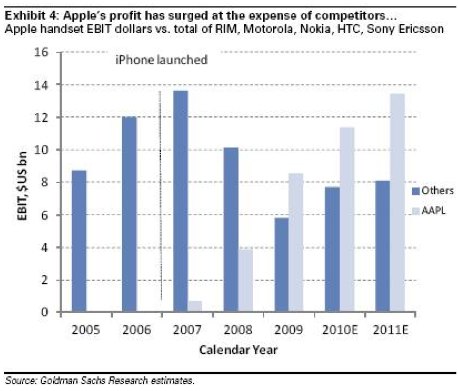From Apple’s FQ3 press release:
“Apple sold 3.47 million Macs during the quarter, representing a new quarterly record and a 33 percent unit increase over the year-ago quarter. The Company sold 8.4 million iPhones in the quarter, representing 61 percent unit growth over the year-ago quarter. Apple sold 9.41 million iPods during the quarter, representing an eight percent unit decline from the year-ago quarter. The Company began selling iPads during the quarter, with total sales of 3.27 million.”
In millions of units.
Product Asymco Actual Diff Error
iPhone 8.500 8.398 0.102 1.2%
Mac 3.462 3.472 -0.010 -0.3%
iPad 3.300 3.270 0.030 0.9%
iPod 9.398 9.406 -0.008 -0.1%
Rankings of various analyst forecasts are at :
Deagol’s blog.

